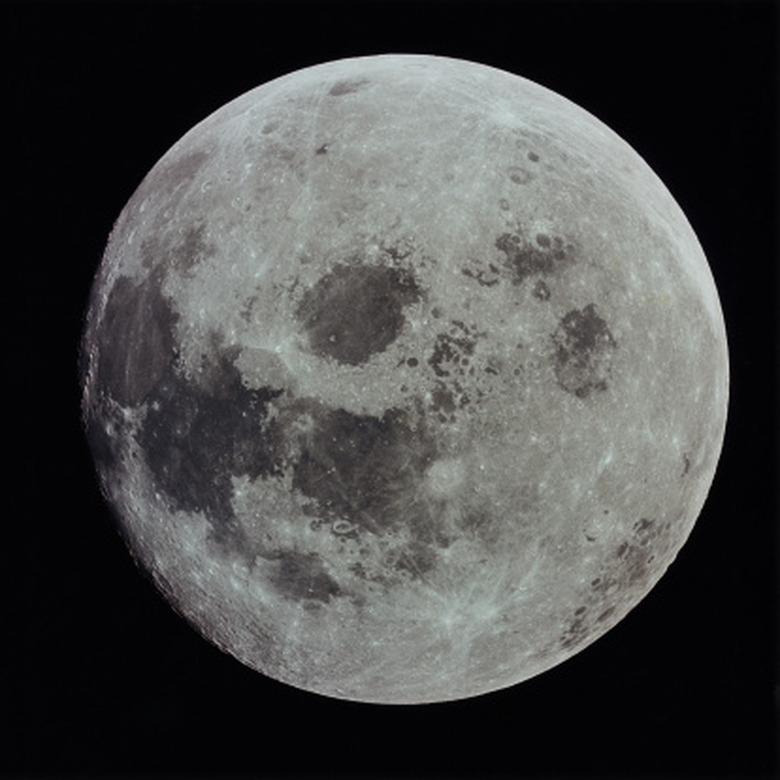Types Of Moon Phases
The phases of the moon produced a profound impression on the ancient world. The moon waxed and waned in such a regular fashion that many ancient peoples used its cycle as the basis of their respective calendars. Even today, Muslims and the Chinese divide the year into lunar months. Astronomy also concerns itself with the phases of the moon. It is customary to divide a lunar cycle into eight distinct phases.
New Moon
New Moon
The moon disappears from the nocturnal sky for a few days when the moon is close to the point at which it lies directly between the Earth and the sun, when it is said to be "in conjunction with" the sun. According to ancient usage, the new moon was the first sliver of lunar light that became visible after its dark phase, but according to modern astronomical usage, the new moon occurs at the time of its conjunction with the sun, since the moon begins a new cycle at this time. Less precisely, the term "new moon" refers to the entire dark phase of the moon.
Full Moon
Full Moon
Full moon occurs about two weeks after new moon. During this lunar phase, the entire lunar disk appears in the nocturnal sky for a few days. Astronomically, full moon occurs when the moon is at opposition to the sun, which means that the Earth lies directly between the sun and the moon. On rare occasions, two full moons occur in a single calendar month. When this happens, the second full moon is called a blue moon.
First and Last Quarters
First and Last Quarters
Another significant lunar phase occurs when approximately one half of the lunar disk appears in the nocturnal sky. This takes place twice during the monthly lunar cycle. The first of these two phases, called the first quarter, occurs about a week after new moon. The second phase, called the last quarter, occurs about a week after the full moon. Astronomically, the moon is at quadrature at these times. This means that a 90° angle lies between a line drawn from the Earth to the moon and another line drawn from the Earth to the sun.
Crescent Phases
Crescent Phases
As the moon travels from conjunction to first quarter, it appears as a gradually growing crescent in the nocturnal sky. The convex side of the crescent faces the sun, which has set in the west. As the moon journeys from last quarter to new moon, it appears as a gradually diminishing crescent in the nocturnal sky. The convex side of the crescent faces the sun, which is about to rise in the east.
Gibbous Phases
Gibbous Phases
The Latin word "gibbus" means hump. The moon has two phases in which it appears to have a hump. In the first of these phases, as the moon travels from first quarter to the full moon phase, the hump appears to grow (a waxing gibbous moon). Then, on the journey from full moon to the last quarter, the hump appears to decline (a waning gibbous moon). Accordingly, the complete lunar cycle consists of gradual growth from new moon to full moon, then gradual decline from full moon to new moon.
References
- The Columbia Encyclopedia; Phase; 2008
- National Aeronautics and Space Administration: How Long Does Each Phase of the Moon Last?
- Christian Churches of God; How to Determine the Day of the Next Conjunction, Easily; James Dailley; 2006
- The Columbia Encyclopedia; Quadrature; 2008
- Moon Connection: Understanding the Moon Phases
Cite This Article
MLA
Zimmermann, Daniel. "Types Of Moon Phases" sciencing.com, https://www.sciencing.com/types-moon-phases-8429727/. 24 April 2017.
APA
Zimmermann, Daniel. (2017, April 24). Types Of Moon Phases. sciencing.com. Retrieved from https://www.sciencing.com/types-moon-phases-8429727/
Chicago
Zimmermann, Daniel. Types Of Moon Phases last modified March 24, 2022. https://www.sciencing.com/types-moon-phases-8429727/
